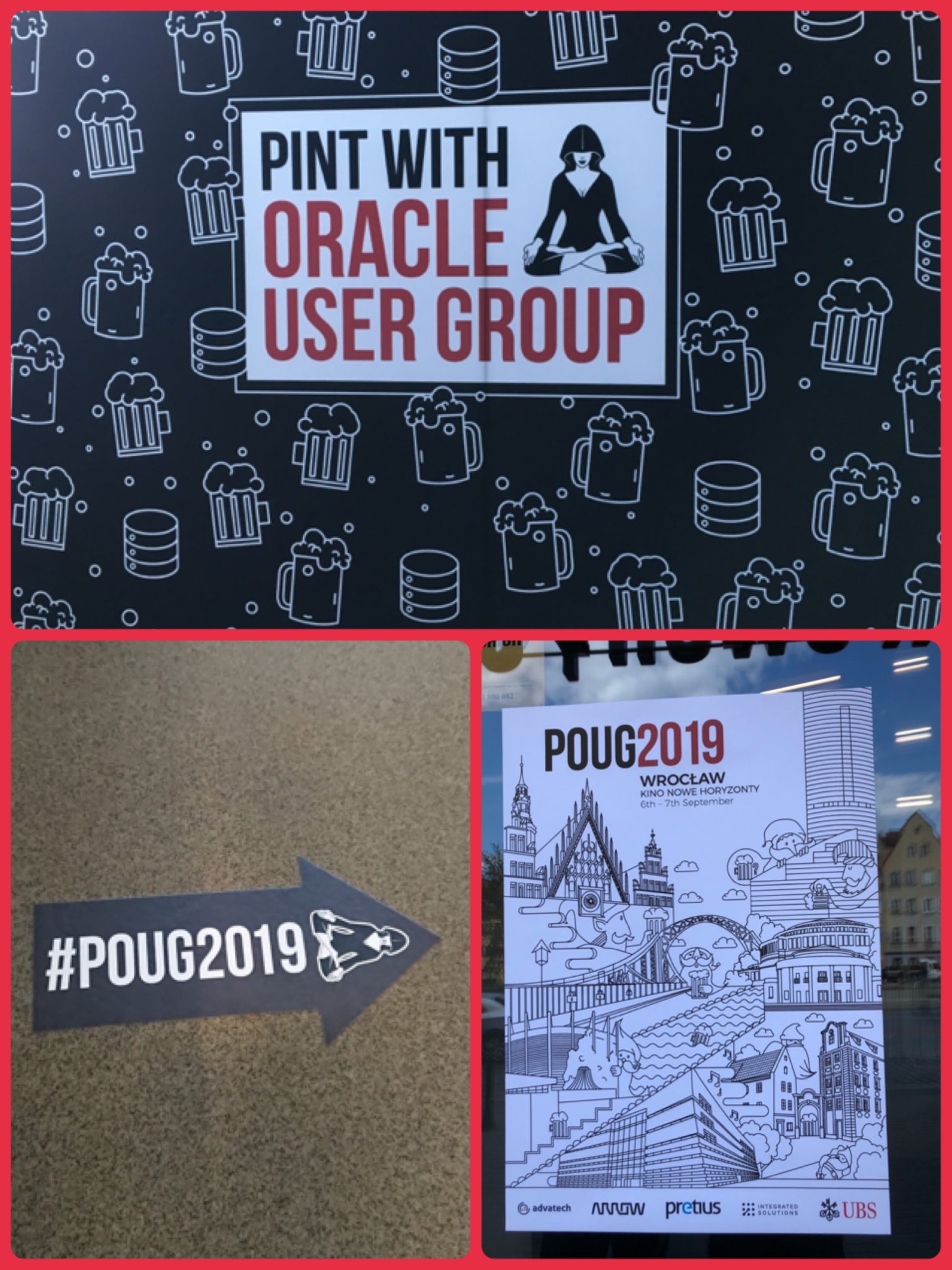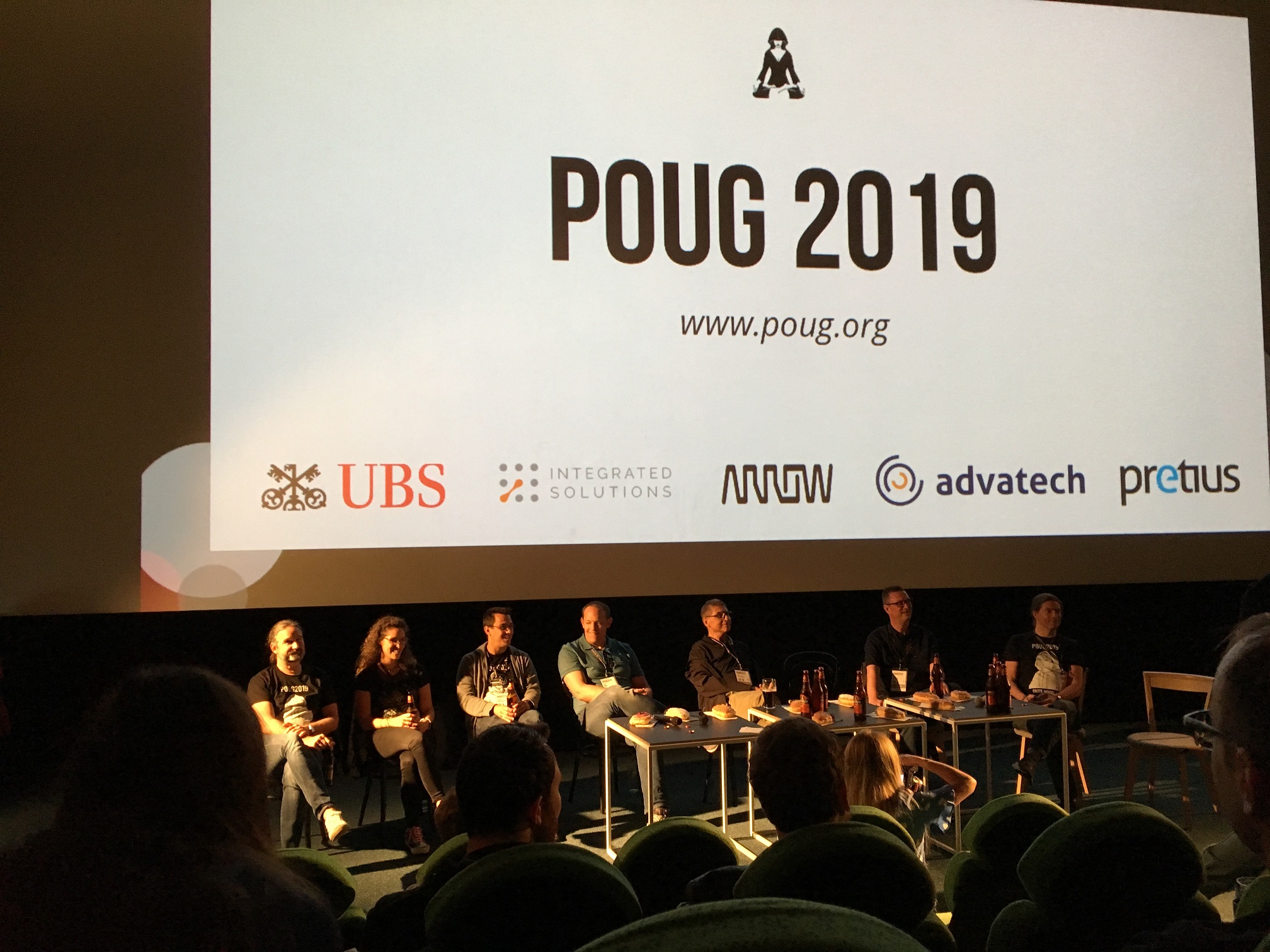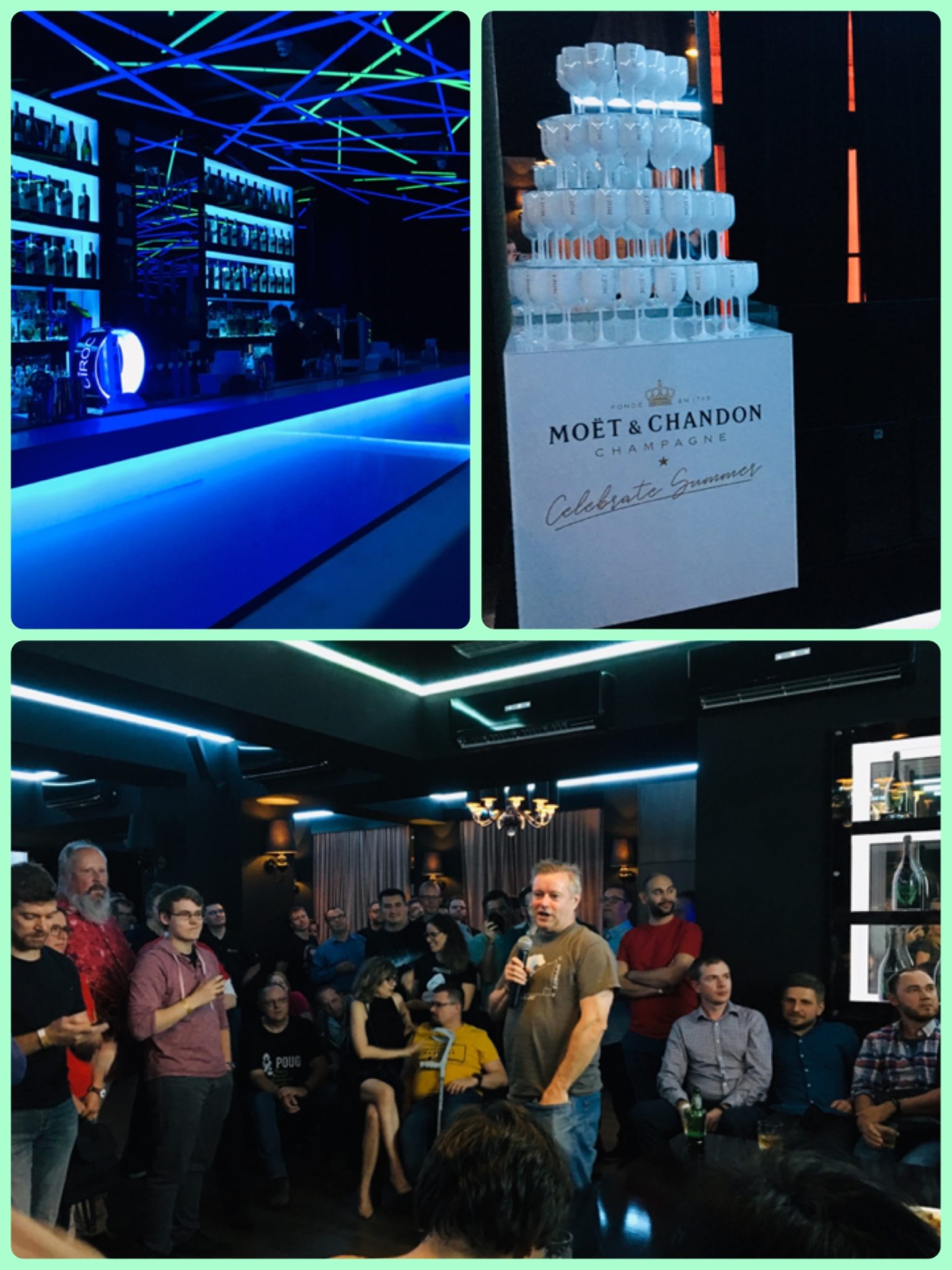POUG (Pint with Oracle users group) organized his annual conference on 6-7th September in Wroclaw in New Horizons Cinema.

My abstract about “MySQL 8.0 Community: Ready for GDPR?” was accepted, so I had the opportunity to be there.
Sessions
My talk was planned for the first day. New MySQL 8.0 version introduces several improvements about security and these are the main points I discussed:
– Encryption of Redo/Undo and Binary/Relay log files, which comes to enrich existing datafile encryption
– Some password features such as:
* Password Reuse Policy, to avoid a user to always use the same passwords
* Password Verification Policy, to require current password before changing it
* validate_password Component (which replaces the old validate_password Plugin), to define a secure password policy through some system variables and 3 different levels
– New caching_sha2_password plugin, which let you manage authentication in a faster and more secure way
– SQL Roles, to simplify the user access right management
Here some interesting sessions that I attended.
Keep them out of the database!
How to avoid unwanted connections to have access to our database? Flora Barrièle and Martin Berger explained some possibilities.
Following methods have limitations:
– Filter through a firewall, cause we have to involve the network team
– Use a dedicated listener for each instance, cause it’s difficult to manage in case of big number of databases and environments
To solve these issues we can use instead:
– Connection Manager (a sort of listener with in addition a set of rules to define the source, service, activity, destination)
– Access Control List (ACL, a new functionality of Oracle 12.2 which is used to protect PDBs and associated services)
– Logon triggers
– Audit and reports
In conclusion, different solutions exist. First of all we have to know our ecosystem and our environments before deciding to put something in place. Then we should make it as simple as possible, test and check what is the best for our specific situation.
The MacGyver approach
Lothar Flatz explained an approach to analyze what’s wrong with a query and how to fix it when we don’t have a lot of time.
The first step is to optimize, and for this point we have to know how the optimizer works. Then we can enforce new plans (inserting hints, changing statements text, …) and look for the outline.
Sometimes it’s not easy. Lothar’s session ended with this quote: “Performance optimization is not magic: it’s based on knowledge and facts”.
From transportable tablespaces to pluggable databases
Franck Pachot showed different ways to transport data in different Oracle versions:
– Simple logical move through export/import -> slow
– Logical move including direct-path with Data Pump export/import -> flexible, but slow
– Physical transport with RMAN duplicate -> fast, but not cross-versions
– Transportable Tablespaces which provides a mix between logical move (for metadata) and physical transport (for application/user data) -> fast and flexible (cross-versions)
– Physical transport through PDB clone -> fast, efficient, ideal in a multi-tenant environment
– Full Transportable Tablespaces to move user tablespaces and other objects such as roles, users, … -> flexible, ideal to export from 11R2 to 12c and then to non-CDB to multi-tenant, no need to run scripts on dictionary
Data Guard new features
The Oracle MAA (Maximum Availability Architectures) describes 4 HA reference architectures in order to align Oracle capabilities with customer Service Level requirements. Oracle Data Guard can match Silver, Gold and Platinum reference architectures.
Pieter Van Puymbroeck (Oracle Product Manager for Data Guard) talked about following new 19c features:
– Flashback operations are propagated automatically to the standby (requirements: configure standby for flashback database and in MOUNT state first, set DB_FLASHBACK_RETENTION_TARGET)
– Restore points are automatically propagated from the primary to the standby
– On the Active Data Guard standby, the database buffer cache state is preserved during a role change
– Multi-Instance Redo Apply (parallel redo log apply in RAC environments)
– Observe-Only mode to test fast-start failover without having any impact on the production database
– New commands such as “show configuration lag;” to check all members, and to export/import the Broker configuration
Discussion Panel
In the form of a discussion animated by Kamil Stawiarski, and with funny but serious exchanges with the audience, some Oracle Product Managers and other Oracle specialists talked about one of most topical subject today: Cloud vs on-prem. Automation, Exadata Cloud at Customer, Oracle documentation and log files and much more…

Networking moments
Lots of networking moments during this conference: a game in the city center, a speakers dinner, lunch time at the conference, the party in the Grey Music Club.

As usual it was a real pleasure to share knowledge and meet old friends and new faces.
Thanks to Luiza, Kamil and the ORA-600 Database Whisperers for their warm welcome and for the perfect organization of the event.
A suggestion? Don’t miss it next year!
![Thumbnail [60x60]](https://www.dbi-services.com/blog/wp-content/uploads/2022/10/ELU_web-min-1-scaled.jpg)
![Thumbnail [90x90]](https://www.dbi-services.com/blog/wp-content/uploads/2022/10/STS_web-min-scaled.jpg)
![Thumbnail [90x90]](https://www.dbi-services.com/blog/wp-content/uploads/2022/08/STH_web-min-scaled.jpg)
![Thumbnail [90x90]](https://www.dbi-services.com/blog/wp-content/uploads/2022/09/SNA_web-min-scaled.jpg)